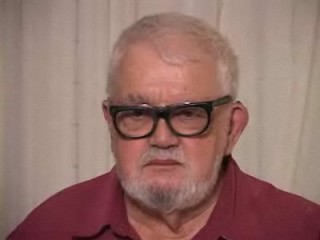
John McCarthy biography
Date of birth : 1927-09-04
Date of death : 2011-10-24
Birthplace : Boston, Massachusetts, U.S.
Nationality : American
Category : Science and Technology
Last modified : 2011-10-25
Credited as : computer scientist, creator of LISP, AI
2 votes so far
McCarthy was born in Boston, Massachusetts, on September 4, 1927. His father, John Patrick McCarthy, was an Irish immigrant and working-class militant. His mother, Ida Glatt, was a Jewish Lithuanian active in the suffrage movement. Both were members of the Communist party in the 1930s, so McCarthy is what is known among political activists as a "red diaper" baby. John Patrick McCarthy worked as a carpenter, a fisherman, a union organizer, and also as an inventor. He held two patents, one for a ship caulking machine and the other for a hydraulic orange juice squeezer. Young John McCarthy and his brother Patrick were raised to think politically and logically, and although McCarthy eventually decided that Marxism was hardly scientific, he never renounced science, logic, or politics.
He graduated the California Institute of Technology (Cal Tech) in 1948. From Cal Tech, McCarthy went to Princeton University, where he earned his doctorate in mathematics and took his first academic job as an instructor in mathematics in 1951. Two years later he became an acting assistant professor of mathematics at Stanford University before moving to Dartmouth College in 1955. While at Dartmouth in the summer of 1956, he was the principle organizer of the first conference on modeling intelligence in computers and coined the term artificial intelligence for the conference proposal. McCarthy was working on a chess-playing computer program at the time. In order to limit the moves the computer had to consider, McCarthy invented a search strategy and mathematical method that is now called the alpha-beta heuristic, which allowed the computer to eliminate any moves that permit the computer's opponent to quickly gain an advantage.
In 1958 McCarthy moved to the Massachusetts Institute of Technology (MIT), where he became an associate professor and founded the first AI laboratory. It was here that McCarthy constructed the computer programming language called List Processing Language, or LISP, which is still the most common computer language used in AI research. He also began work on the idea of giving a computer "common sense"--a difficult problem that became the focus of many AI researchers in the late 1980s--and developed the first means of interactive time-sharing on computers which allows hundreds, or even thousands of people, to use one large computer at the same time. During his tenure at MIT, McCarthy married for the first time and had the first of his two daughters, Susan Joanne. In 1962 he moved his family to Stanford to take up a professorship in computer science and start a second AI laboratory. He has two other children, Sarah Kathleen and Timothy Talcott.
While at Stanford McCarthy continued to contribute to AI research in a number of ways, from mentoring many of the best young scientists in the field, to clarifying the different roles played by mathematical logic and common sense (called nonmonotonic reasoning by McCarthy) in AI. But his greatest contribution has been in the area of artificial languages, especially semantics. Philip J. Hilts, in his book Scientific Temperaments, quotes one mathematician on LISP: "The new expansion of man's view of the nature of mathematical objects, made possible by LISP, is exciting. There appears to be no limit to the diversity of problems to which LISP will be applied. It seems to be a truly general language, with commensurate computing power." In addition, McCarthy has speculated on machines that could make copies of themselves (automata) as well as artificial intelligence smarter than its creator.
From 1978 to 1986, McCarthy developed the circumscription method of non-monotonic reasoning. In 1982 he appears to have originated the idea of the space fountain which was further examined by Roderick Hyde.
His 2001 short story "The Robot and the Baby" lightheartedly explored the question of whether robots should have (or simulate having) emotions, and anticipated aspects of Internet culture and social networking that became more prominent in the ensuing decade.
John McCarthy died on Monday at the age of 84, according to Stanford University, where he served on the faculty for almost four decades. In organizing the Dartmouth Summer Research Conference on Artificial Intelligence in 1956, McCarthy not only added a term to the popular lexicon, he founded an entirely new area of research alongside fellow pioneers Marvin Minsky, Nathaniel Rochester, and Claude Shannon. In the years to come, he would go on invent Lisp programming language and he played a major role in the development of time-sharing systems.
McCarthy's awards and honors
Turing Award from the Association for Computing Machinery (1971).
Kyoto Prize (1988).
National Medal of Science (USA) in Mathematical, Statistical, and Computational Sciences (1991).
Inducted as a Fellow of the Computer History Museum (1999)
Benjamin Franklin Medal in Computer and Cognitive Science from the Franklin Institute (2003).
Inducted into IEEE Intelligent Systems' AI's Hall of Fame (2011), for the "significant contributions to the field of AI and intelligent systems".


















